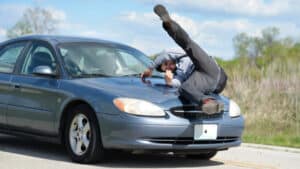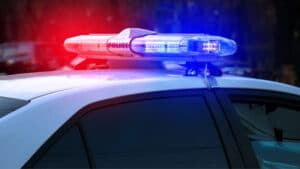Written By: Chris Dolan and Candice Sannella
Henry from San Francisco writes:If I am hit by an autonomous vehicle who is responsible for the accident? It was recently reported that the DMV suspended Cruise cars from shuttling paying customers. Since they and other autonomous vehicle companies are still allowed to continue testing their cars in the streets of San Francisco, can we still hold them responsible for an accident they are involved in?
Thank you for your question, Henry.
Self-driving cars, once a concept confined to the pages of science fiction, are now a reality on the roads of California and beyond. By 2025, it’s estimated that we’ll be sharing the road with around 8 million autonomous or semi-autonomous vehicles. However, this technological leap brings many legal challenges, particularly when determining human liability in accidents involving these vehicles. Despite the promise of increased safety and reduced accidents, autonomous vehicle collisions remain a reality.
Human Fault in Autonomous Vehicles
Even in fully autonomous vehicles, there may be situations where human fault can contribute to an accident. Driver education and awareness are crucial factors. Drivers need to understand the capabilities and limitations of their autonomous vehicles. Accidents can occur when drivers misuse the technology or place undue trust in it. Determining whether a driver’s actions contributed to an accident, even if autonomous features were engaged, poses a unique challenge in the legal realm. This challenge can be overcome by data collection and evidence captured and stored by the vehicle. These systems are equipped with sophisticated sensors and monitoring systems that determine if the driver is paying attention.
Determining Liability in Autonomous Vehicle Accidents
One of the fundamental challenges in autonomous vehicle accidents is ascertaining liability. In traditional accidents, human error is often a significant contributing factor. However, the responsibility may extend to the manufacturer, software developers, and the vehicle owner in self-driving car accidents. Legal principles such as strict liability, negligence, and product liability come into play when evaluating fault. It is important to note that according to the National Highway Traffic Safety Administration (“NHTSA”), “[T]here is no vehicle currently available for sale that is fully automated or “self-driving.” Every vehicle currently for sale in the United States requires the driver’s full attention for safe operation.” This means that regardless of the level of automation, human error continues to play a role in any collision.
Data Collection and Evidence
It is important to understand that your vehicle is equipped with sensors throughout the car that provide feedback to the driver in real-time, and the data can be collected and used as evidence in your case. Automakers and technology companies are developing driver monitoring systems that combine sensor data and use artificial intelligence to assess driver attention. This advanced attention detection software uses data from cameras and sensors throughout the vehicle to analyze the driver’s facial expressions, eye movement, and other behaviors. This software can detect signs of drowsiness or distraction and provide real-time feedback to the driver. Some autonomous vehicles can also use voice recognition and audio analysis to determine if the driver is conversing with passengers or other activities that might distract them from driving. Suppose the system detects that the driver is not responsive to audio warnings or prompts. In that case, it may issue notifications, disengage autonomous mode, or even pull the vehicle over if it detects severe driver distraction or inattention.
Comparative Fault and Complexities in Multi-Automation Level Accidents
The complexity of liability in autonomous vehicle accidents becomes even more apparent when two vehicles equipped with varying levels of automation are involved. A straightforward two-party lawsuit can swiftly evolve into a convoluted multi-party legal battle. Comparative fault is relevant in determining liability in car automation cases in California. Comparative fault is a legal principle that allows for the assignment of fault or liability in proportion to the degree of negligence of each party involved in an accident.
When automation is a factor in a car accident, comparative fault can be applied to assess the level of responsibility of various parties, including human drivers and the vehicle’s automation systems. The key idea is that liability may be distributed among multiple parties based on their contributions to the accident. For example, consider a scenario where one vehicle is equipped with Level 2 automation, which requires the driver to remain engaged, and another is equipped with Level 5 automation, enabling full autonomy without human intervention. Determining liability can be particularly challenging in an accident between these two vehicles. Was the Level 2 driver at fault for not taking control when necessary, or did the Level 5 vehicle fail to avoid the collision?
California’s comparative fault system allows for a more nuanced determination of liability, considering the actions of both human drivers and automation technology in accidents involving self-driving or semi-autonomous vehicles.
Regulatory Framework and Uncertainty
The evolving regulatory framework further complicates the legal landscape surrounding autonomous vehicles. State and federal laws continually adapt to accommodate this new technology, leading to uncertainty in personal injury claims. Attorneys must remain well-versed in the latest regulations to effectively represent their clients.
The regulatory framework has an enormous impact on liability determinations. For example, if a particular state has stringent regulations that place a significant burden on autonomous vehicle manufacturers, the liability landscape may differ compared to a state with more lenient regulations. Consequently, understanding and navigating these legal nuances is paramount to effectively representing clients involved in autonomous vehicle accidents.
In California, the law regarding autonomous vehicles and human liability is still developing, albeit rapidly. However, some key statutes provide guidance:
- The California Vehicle Code Section 38750 provides the legal framework for operating autonomous vehicles in the state. This statute allows for the testing and operation of autonomous vehicles, provided certain conditions are met, including a human operator in the vehicle who can take control if necessary.
- Product Liability: Under California product liability law, manufacturers, distributors, and sellers can be held liable for injuries caused by defects in their products [Restatement (Second) of Torts § 402A]. This could apply to autonomous vehicles if a defect in the vehicle’s autonomous system causes an accident.
- Negligence: In California, a person can be liable for negligence if they fail to exercise reasonable care and this failure causes injury to another person [California Civil Code Section 1714(a)]. This could potentially apply to the human operator of an autonomous vehicle if they fail to take control of the vehicle when necessary to prevent an accident.
As autonomous vehicles continue to gain prominence on California’s roadways, the legal landscape surrounding personal injury claims is constantly in flux. Attorneys must grapple with the complexities of liability, data retrieval, product liability, and an ever-evolving regulatory framework. Staying updated with the latest case law and legal developments is essential to effectively representing clients in these cases.
If you have been injured in an autonomous vehicle collision, it is important that you choose a law firm that understands the complexities involved to safeguard your legal rights and secure the best possible outcome for your case.










